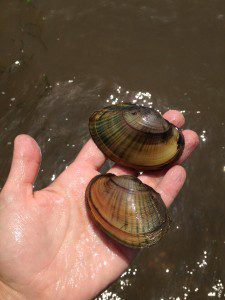A species in decline, the once-abundant North American freshwater mussel is one of the bedrock animals of our local aquatic ecosystem. Last year, a combination art exhibit, educational facility and working mussel hatchery opened at the Fairmount Water Works. Building on the success of the hatchery, several prominent local organizations including the City of Philadelphia, Bartram’s Garden, The Partnership for the Delaware Estuary, Drexel University and the Independence Seaport Museum are joining forces to establish an Aquatic Research and Restoration Center (ARRC).
The Center will be dedicated to the restoration of local aquatic ecosystems in general, and specifically the reintroduction of freshwater mussels and river shad (a kind of herring) to the Delaware Estuary, including our own Schuylkill River. Why shad? Mussels require shad and other host fish in order to breed. Though the shad don’t get anything out of it, we do: Mussels are filter-feeders, and a single mussel can filter waste out of enough drinking water for anywhere from a dozen to two dozen people a day. Considering that the source of Philadelphia’s drinking water is the Schuylkill, which is also where local sewage treatment plants dump their treated effluent, more mussels and therefore more filtration seems like a pretty good idea.
The ARRC program kicks off May 3rd at the Fairmount Water Works (640 Water Works Drive) when a memorandum for the development of the ARRC will be signed.
– Mike VanHelder








May 2nd, 2018 at 11:47 am
The shad most certainly do get something out of it.. healthy mussel populations provide for clean water and also sediment stability that is important for shad reproduction. Thanks for highlighting the effort!